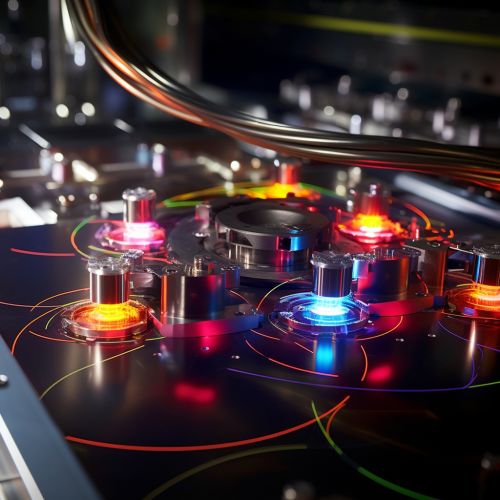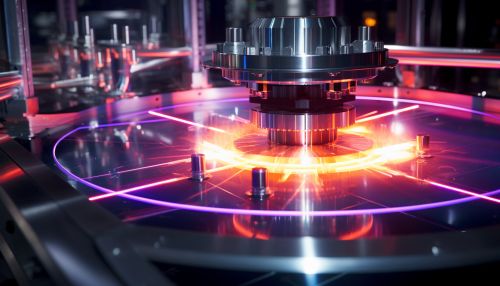Trapped Ion Qubit
Introduction
Trapped ion qubits are a type of quantum computing technology that uses individual ions trapped by electromagnetic fields as the quantum bit or "qubit". This technology has been a significant focus of research in the field of quantum computing due to its potential for high precision and long quantum coherence times.
Principle of Operation
The principle of operation of a trapped ion qubit involves the manipulation of the internal states of ions. Ions are trapped in a vacuum using electromagnetic fields, and their internal states are manipulated using laser or microwave radiation. The trapped ions can be thought of as tiny bar magnets, with the north and south poles representing the two states of a qubit. The quantum superposition of these states allows for the creation of qubits, which are the fundamental units of information in quantum computing.
Ion Trapping Techniques
There are several techniques for trapping ions, including Penning traps and Paul traps. Penning traps use a combination of static and dynamic electric fields to trap ions, while Paul traps use oscillating electric fields. The choice of trapping technique depends on the specific requirements of the quantum computing application, such as the desired number of qubits and the required level of control over the ions.
Qubit Manipulation
Once the ions are trapped, their internal states can be manipulated to perform quantum computations. This is typically done using laser or microwave radiation, which can be tuned to specific frequencies to target specific ions. The manipulation of the ions' internal states allows for the implementation of quantum gates, which are the building blocks of quantum algorithms.
Advantages and Challenges
Trapped ion qubits have several advantages over other types of qubits. They have long coherence times, which means that they can maintain their quantum state for a long time. This is crucial for performing complex quantum computations. They also have high precision, which is important for reducing errors in quantum computations.
However, trapped ion qubits also face several challenges. One of the main challenges is scaling up the technology to create larger quantum computers. This is because each ion in the system needs to be individually controlled, which becomes increasingly difficult as the number of ions increases. Another challenge is dealing with the effects of noise and decoherence, which can cause the qubits to lose their quantum state.
Future Prospects
Despite these challenges, the future prospects for trapped ion qubits are promising. Advances in technology and techniques for ion trapping and manipulation are expected to overcome some of the current limitations. Furthermore, the high precision and long coherence times of trapped ion qubits make them a promising technology for the development of practical quantum computers.
See Also


